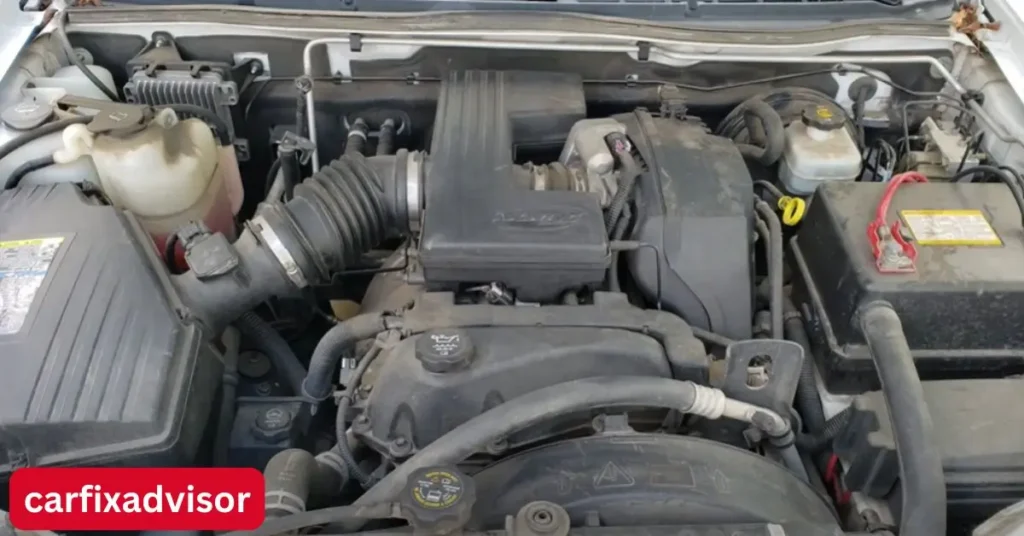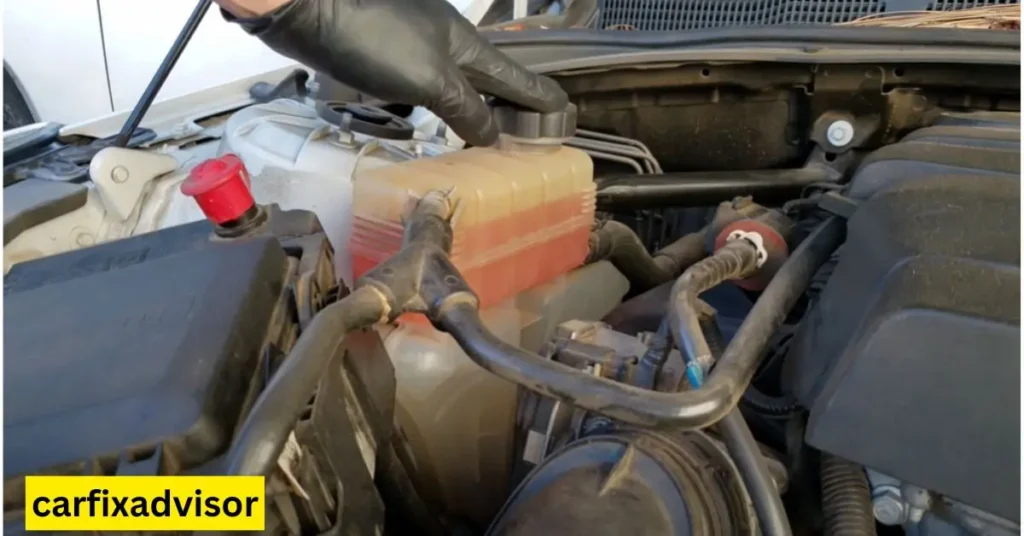Dealing with an overheated engine can be a stressful situation for any car owner. As temperatures rise in your engine, the coolant level may drop, and you may find yourself asking, can you add coolant to a hot engine? While this might seem like a quick fix, it’s important to understand the potential risks and how to handle the situation safely.
In this article, we’ll explore the risks involved in adding coolant to a hot engine, how to properly top off your coolant, and what steps you should take to avoid damaging your engine. We’ll also discuss the best practices to follow in case you need to add coolant during a drive and offer advice on how long you should wait before refilling.
Why Is It Important to Add Coolant Properly?
The primary function of coolant (also known as antifreeze) in your vehicle is to maintain the engine’s temperature within a safe operating range. Coolant prevents the engine from overheating by transferring excess heat from the engine to the radiator, where it is dissipated. If the coolant level is low, it can lead to the engine overheating, which can result in serious damage like warped heads, cracked engine blocks, or even complete engine failure.
However, adding coolant to a hot engine is not always a simple solution. The engine’s high temperature can pose safety risks, and improper refilling can lead to engine damage. Let’s dive into the reasons why you shouldn’t add coolant to a hot engine and how to safely address the situation.
Risks of Adding Coolant to a Hot Engine
While adding coolant seems like a good way to address low coolant levels and prevent further overheating, doing so when the engine is hot can be dangerous. Here’s why:
1. High Pressure in the Cooling System
The engine’s cooling system operates under high pressure, especially when the engine is hot. Opening the coolant reservoir cap or radiator cap while the engine is still hot can release that pressure, causing the coolant to spill out quickly. This can result in burns from the hot coolant or steam.
2. Thermal Shock
When cold coolant is added to an extremely hot engine, it can cause the metal parts of the engine to cool too quickly. This sudden change in temperature can lead to thermal shock, which may cause cracks or warping in engine components like the cylinder heads or the engine block.
Example: Imagine dipping a hot glass into cold water — the glass may crack due to the rapid temperature change. The same concept applies to engine parts.
3. Spilling Hot Coolant
If the coolant cap is removed too soon, hot coolant can spill out and cause severe burns. Even if you use a rag to hold the cap, the pressure inside can still cause the coolant or steam to escape forcefully.
4. Engine Damage
Pouring cold coolant into a hot engine can exacerbate the damage caused by overheating. This could worsen any internal issues that the engine might already be experiencing due to excessive heat. For example, adding coolant too quickly can make things worse by inducing cracks and further damage to already vulnerable engine components.
Can You Add Coolant to a Hot Engine Safely?
Technically, yes, you can add coolant to a hot engine, but it’s not the recommended course of action. If you’re in an emergency situation where the engine has already overheated and you have no choice but to add coolant, here are some precautions you can take:
1. Wait for the Engine to Cool
Time Frame: Ideally, you should allow the engine to cool for at least 20 to 45 minutes before attempting to add coolant. This gives the engine time to cool down to a safer temperature, which reduces the risks of burns and thermal shock.
How Long to Wait: The exact time will depend on factors like how long you’ve been driving, the speed, and the weather conditions. On hot days, it may take longer for the engine to cool down. In cooler conditions, the process may be faster.
2. Use Safety Gear
Protection: Always wear gloves and eye protection when working with hot engine parts. Even with the engine cooling down, the radiator and reservoir caps can still be hot and could cause burns if touched improperly.
3. Loosen the Cap Slowly
When the engine has cooled, partially unscrew the coolant reservoir cap to release any remaining pressure slowly. This step is crucial, as releasing pressure too quickly can cause hot coolant to spill out.
4. Add Coolant Gradually
Add coolant slowly to avoid shocking the engine. If you’re adding coolant to a warm engine, do so carefully and avoid overfilling. The system may still be under pressure, and adding too much could cause the coolant to overflow.
5. Monitor the Engine
After adding the coolant, start the engine and allow it to run for a few minutes while you check for any leaks. Keep an eye on the temperature gauge to ensure that the engine is stabilizing and not continuing to overheat.
How to Add Coolant to a Car: A Safe and Effective Method
Now that you know the risks of adding coolant to a hot engine, here are the steps to follow when you need to top off your coolant safely:
Step-by-Step Guide to Adding Coolant
Turn Off the Engine and Let It Cool
Allow the engine to cool down for at least 20 minutes. If you’re in a rush, you may need to wait a bit longer.
Use Safety Gear
Put on gloves to protect your hands from any hot surfaces or coolant.
Check the Coolant Reservoir
Open the hood and locate the coolant reservoir. Some cars have a separate radiator cap, while others only have a single reservoir cap.
Loosen the Reservoir Cap
If the engine is still hot, gently loosen the cap to release any built-up pressure. Wait a few seconds before removing the cap completely.
Add the Coolant
Pour coolant into the reservoir slowly until it reaches the appropriate level. Be careful not to overfill it, as this can lead to spillage and other issues.
Tighten the Cap
Once you’ve added enough coolant, replace the cap securely to prevent any leakage.
Start the Engine and Check the Temperature
Turn the engine on and monitor the temperature gauge. Let the engine idle for a few minutes to ensure it’s cooling properly.
Check for Leaks
After a short period of running the engine, check around the radiator and hoses for any signs of coolant leaks.
Can You Drive Immediately After Adding Coolant?
After adding coolant to your engine, it’s not advisable to drive immediately. Here’s why:
1. Let the Engine Stabilize
It’s crucial to allow the engine to stabilize for a few minutes before driving. This gives the coolant time to circulate properly and ensures that the temperature returns to a safe operating range.
2. Check for Leaks
Before hitting the road, ensure there are no coolant leaks around the engine bay. Leaks could indicate a larger issue with the cooling system that needs to be addressed.
Preventing Overheating and Coolant Loss in the Future
While it’s important to know how to add coolant to your engine safely, preventing overheating and coolant loss in the first place is even more crucial for the health of your vehicle. Regular maintenance and vigilance can help you avoid many overheating issues and ensure that your engine runs smoothly.
1. Check Coolant Levels Regularly
Importance: Regularly checking your coolant levels can help prevent sudden drops, ensuring your engine is properly protected against overheating.
Tip: Make it a habit to check the coolant levels at least once a month, or more often if you notice the engine temperature rising unexpectedly. Also, check for any visible signs of leaks under the car or around the engine bay.
2. Use the Correct Coolant
Importance: Using the right type of coolant for your vehicle is essential. Using the wrong coolant or diluting coolant incorrectly can compromise its ability to regulate the engine temperature.
Tip: Always use the manufacturer-recommended coolant. This ensures optimal engine protection. If you are unsure about the correct coolant for your vehicle, consult your owner’s manual or a professional mechanic.
3. Inspect Hoses and Radiator
Importance: Over time, hoses and the radiator can develop cracks, leaks, or blockages that affect the cooling system’s ability to function properly.
Tip: Regularly inspect the radiator hoses for any signs of wear, cracks, or leaks. Replace damaged hoses promptly. Also, inspect the radiator for debris or blockages that could hinder airflow, preventing proper cooling.
4. Ensure Proper Engine Thermostat Function
Importance: The thermostat regulates the flow of coolant through the engine, helping it reach and maintain the proper operating temperature. If the thermostat is malfunctioning, it can cause overheating.
Tip: If your engine is overheating regularly, it might be a sign that your thermostat is stuck closed or malfunctioning. Consider having it inspected or replaced if necessary.
5. Flush the Cooling System
Importance: Over time, coolant can become contaminated with dirt, rust, or other debris. Flushing the cooling system removes these contaminants and keeps the cooling system functioning efficiently.
Tip: Coolant should be flushed and replaced every two years or as recommended in your vehicle’s maintenance schedule. This helps maintain proper coolant flow and prevents blockages.
6. Monitor for Coolant Leaks
Importance: A coolant leak can cause the engine to overheat if the coolant level drops too low. Leaks are often caused by worn-out hoses, damaged radiators, or cracked coolant reservoirs.
Tip: Regularly inspect the engine bay for any signs of coolant leakage. If you notice puddles of coolant under your vehicle or hear a hissing sound, it’s a sign that there might be a leak that needs immediate attention.
What to Do if Your Engine Overheats Again
Even with preventive measures in place, overheating can still occur, particularly if you’re driving in extreme conditions or under heavy load. If your engine overheats again despite taking care of the coolant system, here’s what you should do:
1. Pull Over Safely
The first thing you should do when you notice the engine temperature rising into the red zone is to pull over safely to the side of the road. Continuing to drive with an overheated engine can cause permanent damage.
2. Turn Off the Engine
Once you’ve safely pulled over, turn off the engine to allow it to cool down. Leaving the engine running will only exacerbate the overheating problem, potentially causing more damage.
3. Open the Hood (After Cooling Down)
After turning off the engine, open the hood to allow heat to dissipate more quickly. However, make sure you wait at least 15-20 minutes before opening the hood to avoid burns from the hot engine or steam.
4. Check the Coolant Reservoir
Once the engine has cooled down, check the coolant reservoir. If it’s empty or low, that’s a clear indication that the coolant level needs to be topped off.
5. Wait for the Engine to Cool Before Adding Coolant
As previously discussed, adding coolant to a hot engine is risky. Allow the engine to cool for at least 20-30 minutes before adding coolant. If you need to drive again soon, you can try adding coolant to a warm engine while the car is idling, but be cautious and do it gradually.
6. Check for Leaks
If your engine continues to overheat frequently, inspect for coolant leaks. Leaks are often the root cause of recurring overheating issues. If you find any, get them repaired as soon as possible.
7. Seek Professional Help
If overheating persists even after topping off the coolant and inspecting for leaks, it’s best to take your vehicle to a professional mechanic. The issue might be with the radiator, thermostat, or other critical engine components that need attention.
Conclusion
Adding coolant to a hot engine is risky and should be avoided whenever possible. The pressure in the cooling system, the potential for thermal shock, and the risk of burns make it crucial to allow the engine to cool before attempting to top off the coolant. Always take precautions, and if the situation is urgent, proceed with extreme care.
By regularly maintaining your coolant system and addressing any issues promptly, you can help ensure that your engine stays in good condition and avoid overheating in the future. If you find yourself frequently adding coolant, it’s essential to identify any leaks or mechanical issues that could be contributing to the problem.
In case of an overheating engine, always prioritize safety by letting the engine cool, checking coolant levels, and monitoring for leaks. A well-maintained coolant system is key to a long-lasting, healthy engine.
Meta Description:
Learn the risks of adding coolant to a hot engine and how to do it safely. Follow this guide for proper coolant maintenance, preventing engine damage, and dealing with overheating issues effectively.


